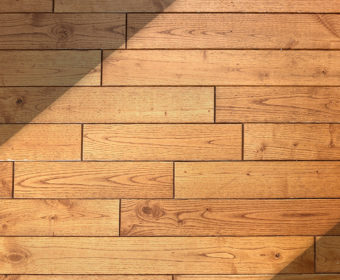Wood flooring is a beautiful and durable option for flooring in any home, but it can be susceptible to gaps during seasonal changes and with poor maintenance. While small gaps are normal and go back to normal in warmer seasons, there are times when the gapping becomes too much. Understanding the causes of these gaps and how to prevent them can help to maintain the beauty and longevity of your wood flooring.
Causes of floor gapping
Seasonal changes can cause wood flooring to gap. During the summer months, when temperatures are warmer and humidity levels are higher, wood flooring will expand as it absorbs moisture from the air. During the winter months, when temperatures are cooler and humidity levels are lower, wood flooring will contract as it loses moisture. These changes in temperature and humidity can cause gaps to appear in the flooring as the planks shrink and expand.
Poor maintenance can also cause wood flooring to gap. If the flooring is not properly acclimated to its environment before installation, it can be more susceptible to gaps. Similarly, if the flooring is not properly installed with the right gaps around the walls, or if the subfloor is not properly prepared, gaps can appear over time.
Lack of proper maintenance can also contribute to gaps. If the flooring is not regularly cleaned and maintained, dirt and debris can accumulate in the gaps between the planks. This can cause the planks to shift and move, which can widen the gaps over time.

How to prevent your planks from separating
So, what can you do to prevent gaps from occurring in your wood flooring?
First, it is important to properly acclimate the flooring before installation. This means allowing the flooring to sit in the room where it will be installed for at least 48 hours before installation and up to a week for solid wood, so that it can adjust to the temperature and humidity of the room.
Second, it is important to properly prepare the subfloor before installation. This means making sure that the subfloor is clean, dry, and level. If the subfloor is not level, this can cause the flooring to shift and move, which can widen gaps over time.
Third, it is important to properly install the flooring with the correct gaps around the walls. The correct gap size will depend on the type of wood flooring being installed, as well as the width of the planks. Your installer should be able to provide guidance on the appropriate gap size for your flooring.
Fourth, it is important to maintain the flooring properly. This means regularly cleaning the flooring to remove dirt and debris that can accumulate in the gaps between planks. It also means keeping the humidity levels in the room stable, to minimize the expansion and contraction of the flooring.
What to do next
If gaps do appear in your wood flooring, there are a few steps you can take to address them. First, it is important to determine the cause of the gaps. If the gaps are a result of seasonal changes, they may close up on their own as humidity levels change. However, if the gaps are a result of poor installation or poor maintenance, they may require more extensive repair.
If the gaps are small, less than 1/8 inch wide, they can often be filled with wood filler. Wood filler is a putty-like substance that is applied to the gaps, then sanded down to create a smooth surface. This can help to fill in the gaps and prevent dirt and debris from accumulating in them. While this is an option, it doesn’t usually last long term and can sometimes be difficult to match in color to your wood.
If the gaps are larger, they may require more extensive repair. This may involve removing the affected planks and replacing them with new planks or sanding down the affected planks to create a smoother surface.
In some cases, it may be necessary to hire a professional to address gaps in your wood flooring. A professional installer or contractor will be able to assess the cause of the gaps and recommend the best course of action for repair.

Conclusion
In conclusion, wood flooring can gap during seasonal changes and with poor maintenance. Understanding the causes of these gaps and taking steps to prevent them can help to maintain the beauty and longevity of your wood flooring.
Proper acclimation, subfloor preparation, installation, and maintenance can all help to prevent gaps from occurring. If gaps do appear, it is important to determine the cause and address it accordingly, whether through minor repairs or more extensive repairs carried out by a professional.
Overall, wood flooring is a beautiful and sustainable option for flooring in any home. By taking care to properly install and maintain your wood flooring, you can enjoy its beauty and durability for years to come.
